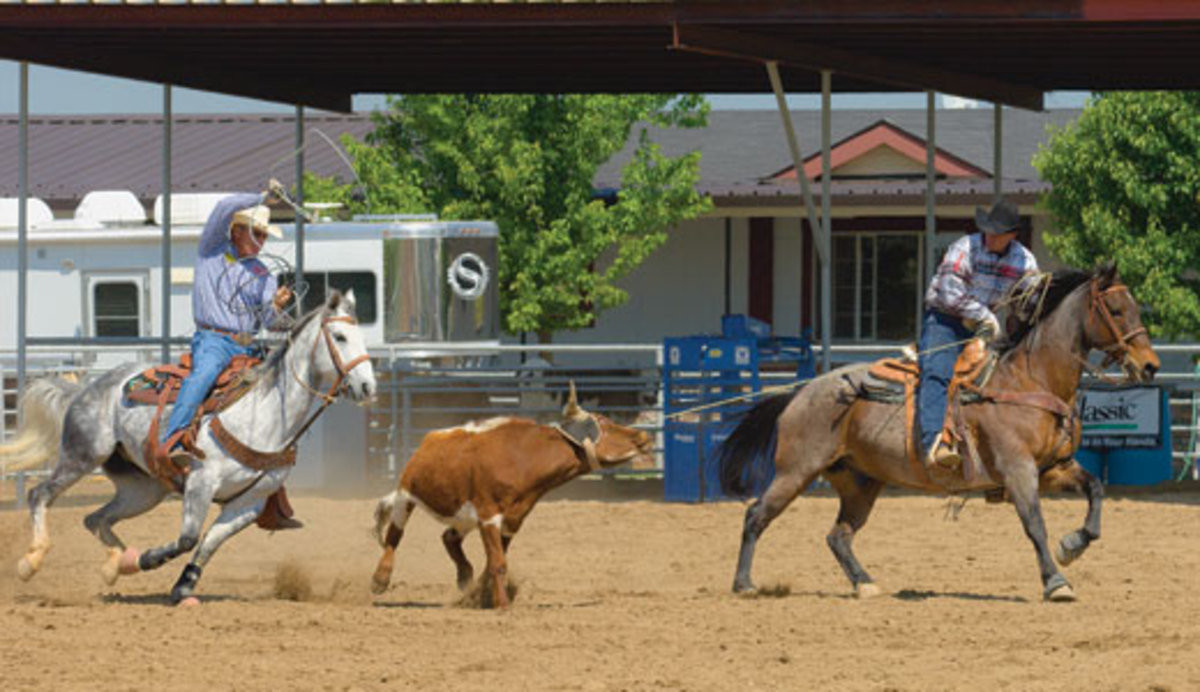Whether youre a horse trainer, you rope for a living or are a hobbyist roper, you have to know how to bring out the best in your horse. Sometimes that means adjustments to your equipment or recognizing basic problems your horse might have, like if hes sore or his teeth need work. Wed have a lot fewer problems if our horses could talk and tell us, The bridles hurting my mouth or The saddles pinching my back. But since they cant, you have to develop a feel and an eye for your horse. You almost have to be a psychologist. You need to pay attention. Then when you see a problem, you need to figure out how to fix it, which sometimes includes experimentation. Weve all messed up our share of horses because of pilot error, or because we really just werent paying attention to what they were trying to tell us. But we need to keep striving to do better, and be better partners to our horses.
Sometimes the adjustments will mean scoring more cattle or pulling the log to help your horse face better. Simple training drills can go a long way toward building strong fundamentals and good habits for you and your horse.

Roping’s fun. It would be awesome to have one horse to practice on, that could take 30 runs a day, four or five days a week, and you could hop him in the trailer and jackpot on him on the weekends. But that’s not reality. Horses can only take so much. A lot of horses are ruined because you’re trying to have fun practicing and you rope too many on them.

Good horses come from hard work, and a lot of ranch and feedlot horses go on to make good arena horses. Unfortunately, there isn’t enough ranch work these days to have that many of those kinds of horses come along anymore. Nowadays, we get a lot of reject cutters, reiners and racehorses that are started young in the roping arena. They don’t necessarily have the miles on them that so many of the ranch-started horses used to. You start pouring the coal to them and putting too much pressure on them, and they tend to get a little hot.

The guys who rope for a living prefer horses that have been around the block. They like horses in their teens with some seasoning, that’ve worked through the quirks you find in green horses. They tend to be lower maintenance, and most of what you have to do is keep them in shape. If you rope two or three steers on a horse like that, and score a bunch, you’re in business.

Rodeo ropers get their fulfillment and thrill from competing and winning. They don’t have enough time and patience to bring along young horses, as a rule. Thank goodness there are people who like to spend the time to bring horses along, and also have the time. They might not have any interest in rodeoing, but some people get a lot of satisfaction out of making a horse and seeing him go on to the highest level.

These two types of ropers complement each other. Even when you get a good one, you have to know how to manage, maintain and correct him. If you don’t, you’ll burn through horses and your horses will cheat you. Patience goes a long way with a horse. Hot-tempered horses and hot-tempered ropers do not mix.










